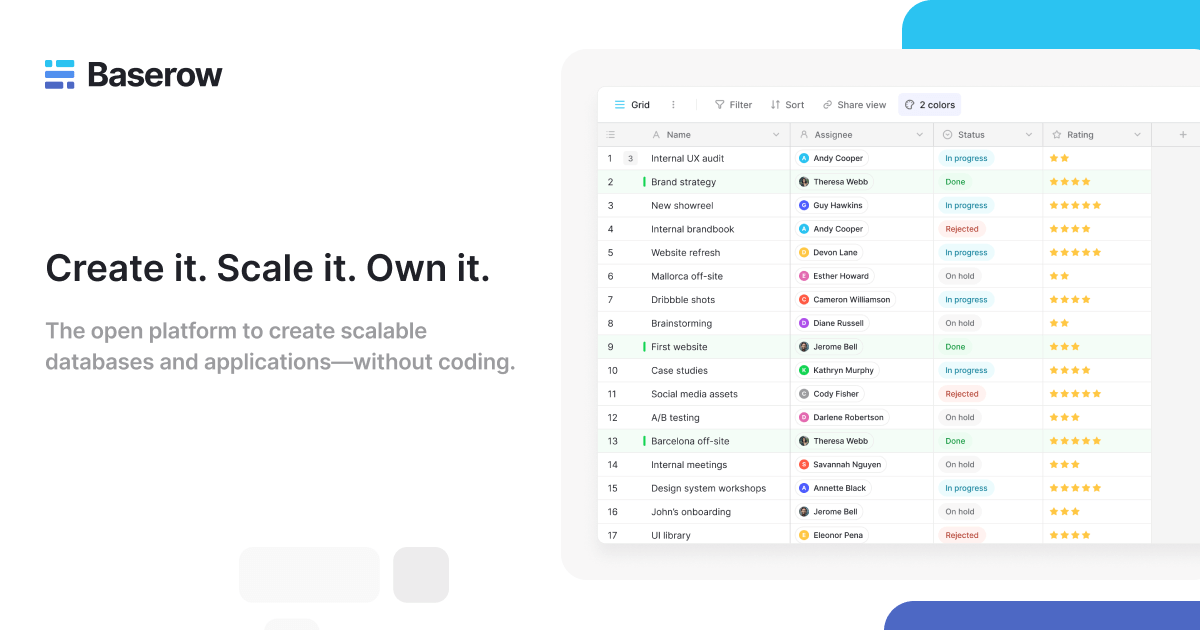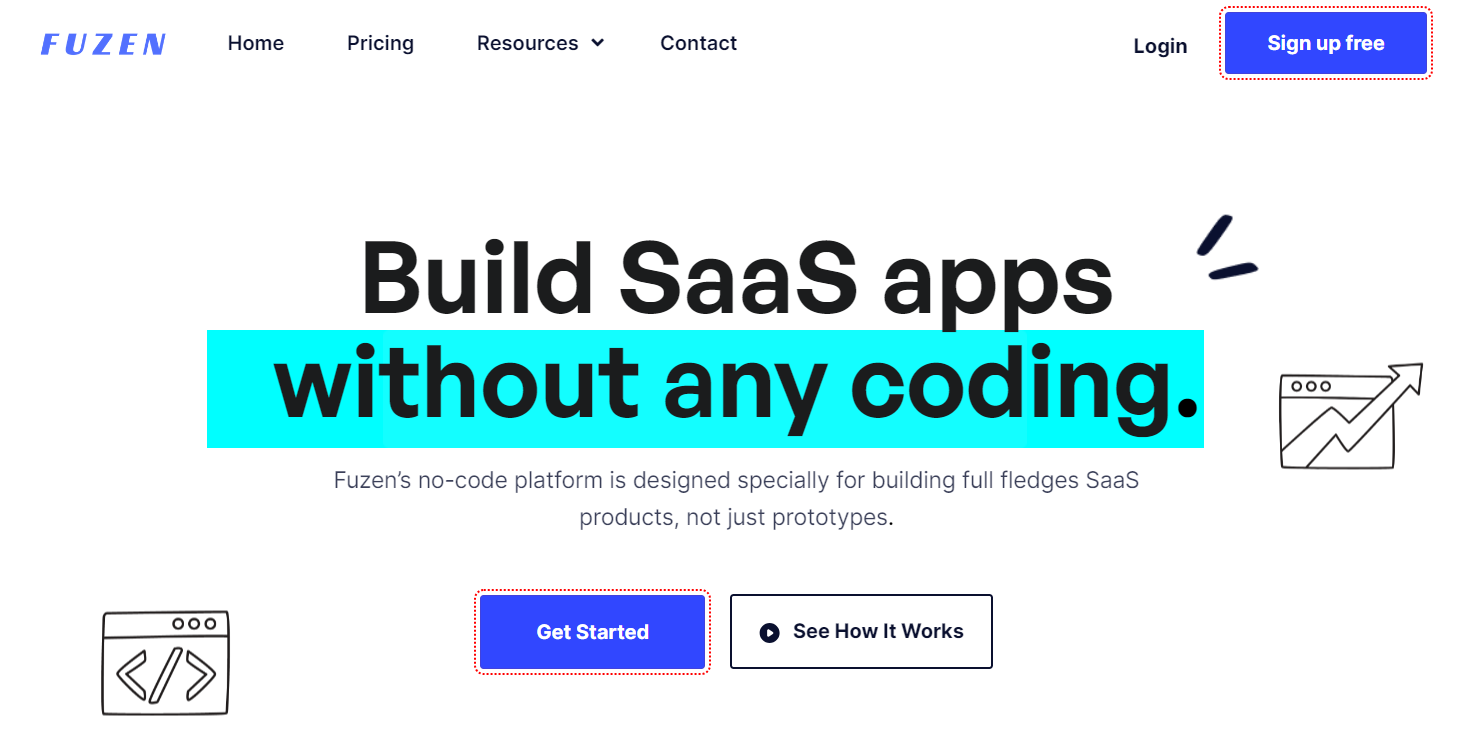No-Code Solutions for Open System Database Production: Build Without Coding Skills
No-Code Solutions for Open System Database Production: Build Without Coding Skills
Blog Article
A Comprehensive Overview to Carrying Out Scalable Data Sources Without the Need for Coding Proficiency
In the modern landscape of data administration, the capacity to implement scalable data sources without coding knowledge is coming to be increasingly essential for organizations of all sizes. What are the crucial elements that can genuinely empower these users to utilize scalable databases efficiently?
Recognizing Scalable Databases
In the world of modern-day information monitoring, scalable data sources have become a crucial option for companies seeking to handle boosting volumes of info successfully. These databases are made to suit growth by permitting for the smooth addition of sources, whether through straight scaling (adding more devices) or vertical scaling (updating existing machines) This versatility is essential in today's fast-paced electronic landscape, where data is generated at an unprecedented rate.
Scalable databases normally use dispersed designs, which allow information to be spread across multiple nodes. This circulation not only improves performance yet likewise gives redundancy, ensuring information availability also in the occasion of equipment failures. Scalability can be a crucial factor for different applications, consisting of e-commerce systems, social media sites networks, and big data analytics, where individual demand can vary significantly.
Additionally, scalable data sources usually include durable data uniformity versions that stabilize performance and reliability. Organizations should consider their specific demands, such as read and write speeds, information integrity, and fault resistance when picking a scalable database solution. Eventually, understanding the underlying concepts of scalable data sources is essential for services intending to flourish in a progressively data-driven world.
Key Attributes to Look For
When reviewing scalable databases, numerous key functions are extremely important to making certain optimum efficiency and dependability. Take into consideration the architecture of the data source. A distributed architecture can enhance scalability by enabling data to be saved across numerous nodes, facilitating seamless data accessibility and processing as need boosts.
One more essential feature is data dividing, which enables effective management of big datasets by splitting them right into smaller sized, much more workable items (no-code). This technique not just boosts efficiency however likewise simplifies resource allocation
Additionally, try to find robust duplication capabilities. This feature makes sure data redundancy and high schedule, lessening downtime throughout upkeep or unanticipated failures.
Performance tracking tools are likewise crucial, as they offer real-time understandings right into system health and wellness and operational performance, permitting prompt modifications to maintain ideal efficiency.

User-Friendly Data Source Tools
Simpleness is an important element in the design of straightforward data source devices, as it boosts access for users with varying levels of technical competence. no-code. These tools prioritize instinctive interfaces, enabling customers to create, manage, and inquiry data sources without needing extensive programming knowledge
Key attributes usually include drag-and-drop functionality, visual information modeling, and pre-built templates that enhance the setup procedure. Such devices commonly use directed tutorials or onboarding procedures that promote user interaction and reduce the understanding curve. Additionally, seamless integration with prominent data sources and solutions guarantees that customers can easily import and export data, further simplifying procedures.

Furthermore, robust support and area resources, such as online forums and paperwork, enhance the individual experience by giving assistance when required. Generally, straightforward data source devices empower organizations to harness the power of scalable databases, making data monitoring obtainable to every person involved.
Step-by-Step Implementation Guide
How can companies effectively apply scalable data sources to satisfy their expanding data requirements? The procedure starts with recognizing details data needs, including the volume, selection, and velocity of data that will certainly be refined. Next off, companies must evaluate user-friendly database devices that supply scalability functions, such as cloud-based remedies or managed database solutions.
As soon as the right tool is chosen, the following action involves configuring the data source setting. This consists of setting up instances, defining individual permissions, and establishing information frameworks that align with company goals. Organizations must after that move existing information right into the brand-new system, making sure information honesty and marginal disruption to operations.
Post-migration, conducting complete screening is important; this consists of efficiency screening under different tons problems to make sure the system can manage future development - no-code. In addition, it is vital to educate team on the data source monitoring user interface to assist in smooth usage
Best Practices for Management
Efficient administration of scalable databases requires a strategic approach that focuses on recurring tracking and optimization. To accomplish this, organizations ought to implement durable surveillance devices that offer real-time insights right into data source performance metrics, such as query reaction times, source application, and deal throughput. Consistently examining these metrics can assist identify traffic jams and areas for enhancement.

Regular backups and disaster recovery plans are important to protect information stability and accessibility. Developing a routine for examining these backups will guarantee a trustworthy recuperation procedure in instance of an unanticipated failing.
Moreover, performance adjusting need to be a constant procedure. Adjusting indexing methods, optimizing inquiries, and scaling resourcesâEUR" whether up and down or horizontallyâEUR" will assist keep optimal efficiency as use demands advance.
Lastly, promoting a society of knowledge sharing among group participants will allow constant understanding and adaptation, making sure that the monitoring of scalable databases remains efficient and effective click here for more with time.
Conclusion
In final thought, the application of scalable data sources can be properly achieved without coding proficiency through the use of straightforward tools and intuitive interfaces. By adhering to the laid out strategies for setup, information migration, and performance testing, individuals can navigate the complexities of database management effortlessly. Emphasizing best practices for ongoing upkeep and cooperation more see boosts the capacity to take care of scalable data sources effectively in a swiftly progressing data-driven atmosphere.
In the contemporary landscape of data management, the ability to apply scalable data sources without coding expertise is coming to be increasingly vital for organizations of all dimensions.In the world of modern information monitoring, scalable data sources have arised as an essential solution for companies looking for to deal with increasing quantities of details effectively.Additionally, scalable databases usually include durable data uniformity versions that balance performance and reliability.Exactly how can organizations effectively carry out scalable databases to fulfill their growing data needs? Next off, organizations should examine easy to use data source Click Here tools that offer scalability functions, such as cloud-based solutions or took care of database solutions.
Report this page